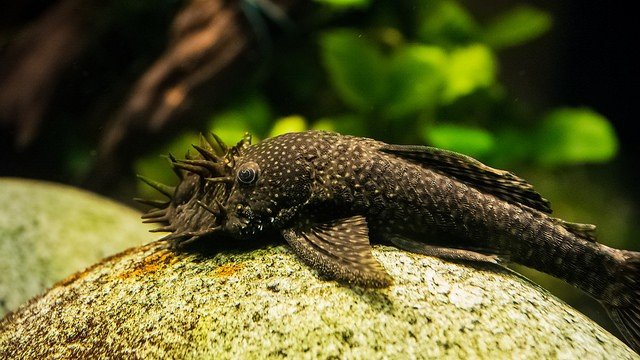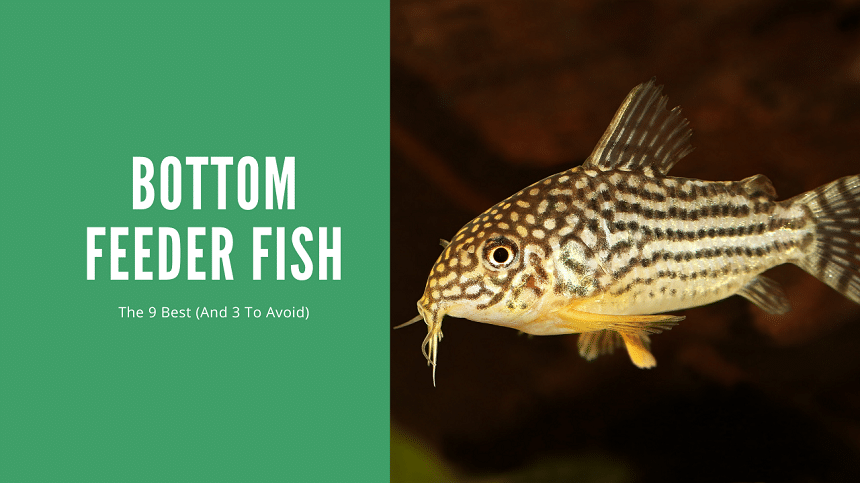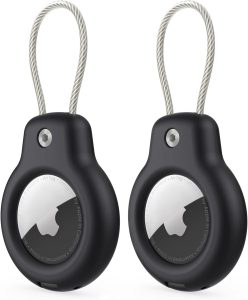Contents
Looking to add some variety to your aquarium? Look no further than freshwater bottom feeder fish! These fascinating aquatic creatures not only add a unique dynamic to your tank but also serve a vital role in maintaining its cleanliness. From the entertaining Corydoras Catfish to the ever-popular Plecos, this article will guide you through the top choices for freshwater bottom feeders, ensuring a happy and healthy aquatic environment for you and your fish.
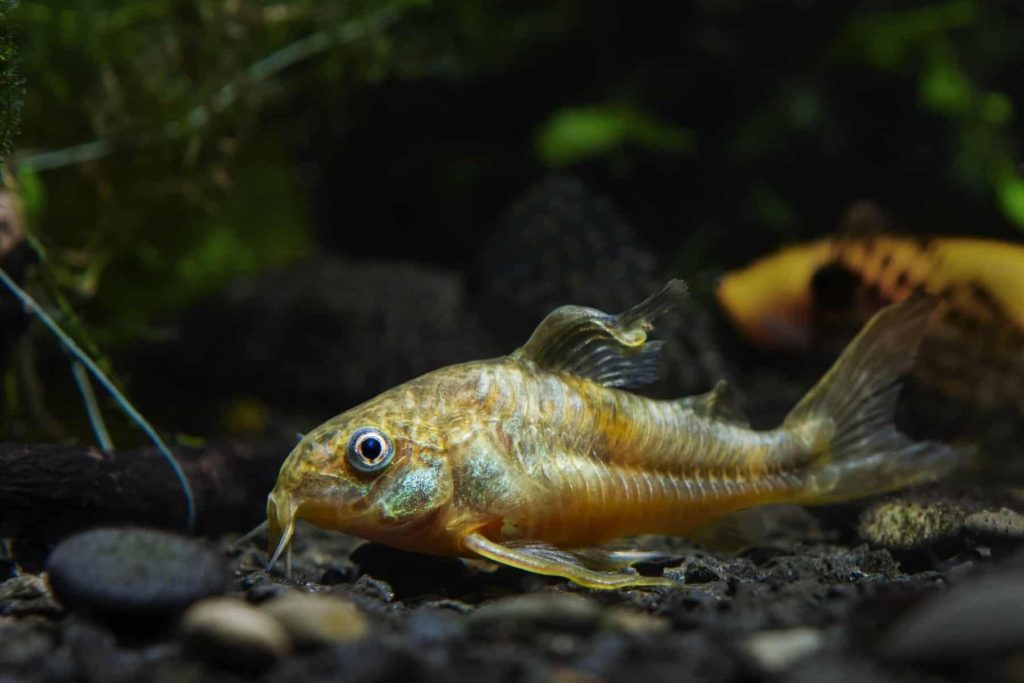
The Best Freshwater Bottom Feeder Fish for Your Aquarium
If you’re looking to add some diversity to your freshwater aquarium, consider introducing bottom feeder fish. These unique and fascinating creatures not only contribute to the overall health of your tank, but they also add an interesting dynamic to your aquatic ecosystem. Choosing the right bottom feeder fish can be a daunting task, as there are numerous options available. In this article, we will guide you through the process of selecting the perfect freshwater bottom feeder fish for your aquarium.
Considerations for Selecting Bottom Feeders
Before diving into the specific types of bottom feeder fish, it’s essential to consider several factors. Compatibility with other fish, the size and tank requirements of the bottom feeder fish, and their feeding habits all play a crucial role in creating a harmonious and thriving aquarium environment.
Compatibility with Other Fish
When choosing bottom feeder fish, it is vital to consider their compatibility with the existing fish in your tank. Some bottom feeders may be more aggressive and territorial, while others are peaceful and social. It’s crucial to research and select bottom feeders that will coexist peacefully with your other fish.
Size and Tank Requirements
Different bottom feeder fish have varying size requirements and tank specifications. Some species may grow larger and require more substantial tank setups, while others are smaller and can thrive in smaller aquariums. Understanding the size and tank needs of bottom feeder fish will help ensure that you can provide them with a suitable and comfortable living environment.
Popular Types of Freshwater Bottom Feeder Fish
There are several popular varieties of freshwater bottom feeder fish that are commonly kept in aquariums. Each species has its own unique characteristics, tank requirements, and feeding habits. Let’s explore some of the most popular bottom feeder fish options:
1. Corydoras Catfish
Corydoras Catfish, also known as Cory Cats, are a popular choice among aquarium hobbyists. They are peaceful, social, and easy to care for, making them an ideal choice for beginners. Cory Cats come in various colors and patterns, adding visual interest to your tank. They are known for their bottom-dwelling behavior and efficient scavenging abilities.
2. Plecostomus
Plecostomus, or Plecos, are another widely recognized bottom feeder fish. These prehistoric-looking fish are well-known for their ability to remove algae from aquarium surfaces. Plecos come in various sizes, so it’s crucial to select a species suitable for your tank’s size. Additionally, they are territorial and may become aggressive towards other bottom feeders.
3. Bristlenose Plecos
Bristlenose Plecos are a smaller species of Plecostomus commonly kept in aquariums. They are named after the prominent bristles that adorn their faces, adding a unique visual appeal. Bristlenose Plecos are excellent algae eaters and can help maintain the cleanliness of your tank. They are peaceful and can coexist with other fish peacefully.
4. Otocinclus Catfish
Otocinclus Catfish, also known as Oto Cats, are tiny bottom feeders that are highly sought after for their algae consumption abilities. These fish are best suited for established aquariums with a stable algae supply. Oto Cats are known for their peaceful nature and should be kept in groups to ensure their well-being.
5. Redtail Catfish
For those looking for a larger and more unique bottom feeder, the Redtail Catfish might be the perfect choice. With its vibrant red tail and impressive size, this catfish is a true centerpiece for any aquarium. However, due to its substantial growth potential, it requires a large tank and a dedicated keeper with proper knowledge and experience.
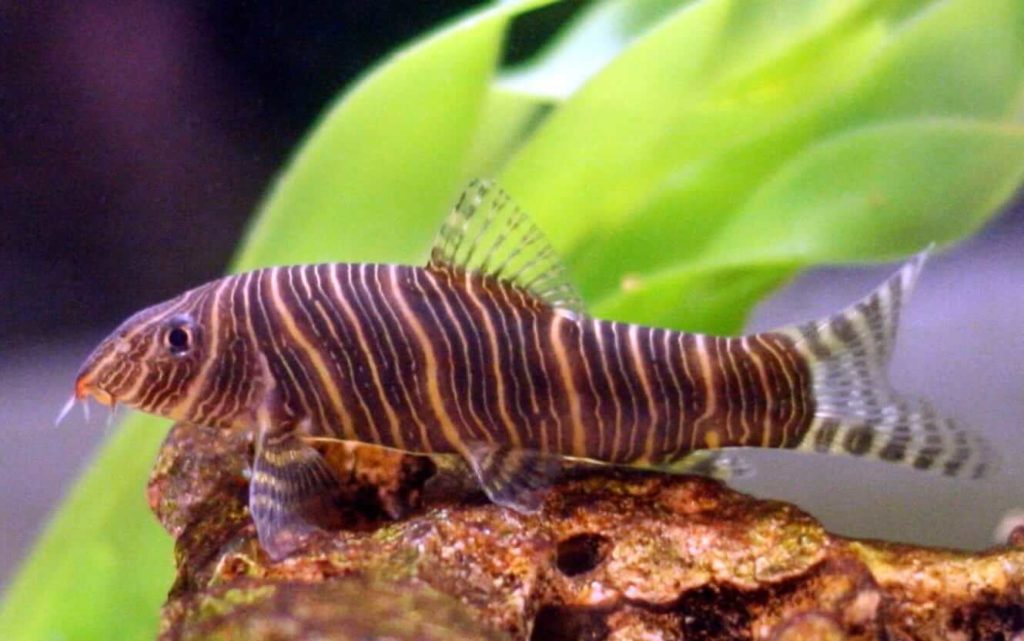
Corydoras Catfish
Let’s dive deeper into the details of Corydoras Catfish and explore their characteristics, tank requirements, feeding habits, and maintenance needs.
Characteristics of Corydoras Catfish
Corydoras Catfish are small, peaceful fish that are known for their social behavior. They have an adorable and playful personality, making them an instant favorite among aquarium enthusiasts. Cory Cats have a distinctive appearance, with their armored bodies and barbels, which resemble tiny whiskers.
Tank Requirements
In terms of tank size, Cory Cats are not demanding. They can thrive in a tank as small as 10 gallons, making them suitable for tanks of various sizes. It’s important to provide them with a sandy substrate to ensure their barbels do not get damaged while foraging on the bottom.
Feeding Habits
Corydoras Catfish are omnivorous bottom feeders, meaning they have a diverse diet. They primarily feed on small organisms, such as worms, insects, and plant matter. In a well-maintained aquarium, they can survive on leftover food and other organic materials that sink to the bottom.
Maintenance
Maintaining a tank with Corydoras Catfish is relatively simple. They are hardy and can tolerate a wide range of water parameters. Regular water changes, proper filtration, and monitoring the tank’s ammonia and nitrate levels are essential for their well-being. Additionally, keeping the tank clean and providing hiding spots with plants or decorations will ensure a stress-free environment for these delightful fish.
Plecostomus
Now, let’s explore the fascinating world of Plecostomus, including their traits and behavior, tank setup, feeding habits, and maintenance requirements.
Traits and Behavior of Plecostomus
Plecostomus are known for their unique appearance, with their flat bodies and powerful sucker mouths. They use their sucker mouths to attach themselves to surfaces, allowing them to scrape off algae and other organic matter. Plecos are generally peaceful in nature but can become territorial, especially when resources are limited.
Aquarium Setup for Plecos
Plecostomus require larger tank setups due to their potential growth and territorial nature. A tank size of at least 30 gallons is recommended for most Pleco species. They prefer a well-structured aquarium with plenty of hiding places, such as caves, driftwood, or rock formations.
Feeding and Diet
Plecos are predominantly herbivores and thrive on a diet consisting of algae and vegetable matter. However, it’s important to supplement their diet with sinking pellets or wafers specifically formulated for bottom feeders. This ensures they receive a balanced diet and helps prevent nutritional deficiencies.
Tank Maintenance Tips
Maintaining a tank with Plecos requires attention to water quality and tank cleanliness. Regular water changes, along with effective filtration, will help maintain stable and suitable water conditions for your Plecos. Additionally, keep an eye on the tank’s algae levels, as excessive growth may indicate an imbalance that needs to be addressed.
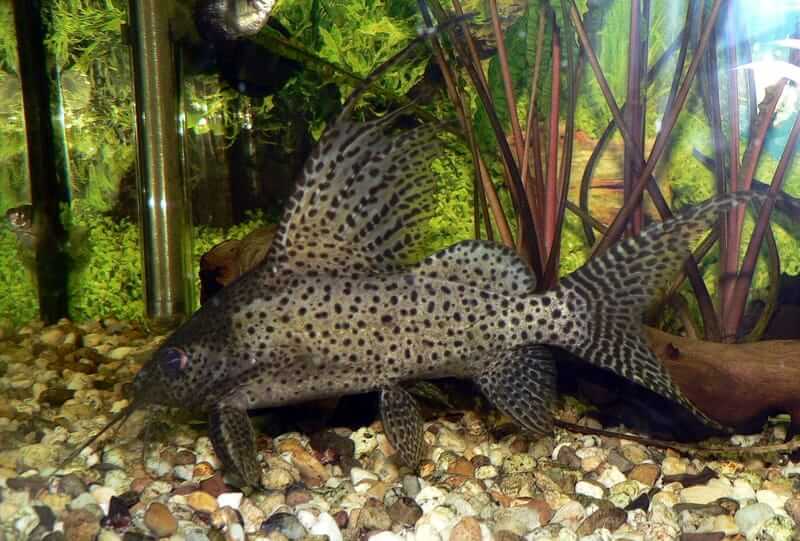
Bristlenose Plecos
Next on our list is the Bristlenose Pleco, a smaller and equally fascinating species within the Plecostomus family. Let’s explore their overview, housing requirements, feeding habits, and water condition maintenance.
Overview of Bristlenose Plecos
Bristlenose Plecos, also known as Bushynose Plecos, are an excellent choice for those looking for a smaller bottom feeder with unique visual appeal. They are known for their bristle-like appendages on their faces, which differ between males and females. These appendages serve as sensory feelers and add an intriguing touch to their appearance.
Housing and Tank Size
Bristlenose Plecos can comfortably thrive in smaller aquariums, making them suitable for hobbyists with limited space. A tank size of at least 20 gallons is recommended to provide them with ample swimming space. Ensure the tank has plenty of hiding spots, such as caves or driftwood, to mimic their natural habitat.
Feeding Bristlenose Plecos
Bristlenose Plecos are primarily herbivores, and their diet should consist mainly of plant matter. They will graze on algae-covered surfaces and consume sinking pellet or wafer food designed for herbivorous fish. Providing them with a varied diet rich in vegetables and algae will help maintain their overall health and vibrant coloration.
Maintaining Water Conditions
Keeping a close eye on water quality is essential to the well-being of Bristlenose Plecos. Regular water changes, effective filtration, and monitoring ammonia and nitrate levels are crucial for ensuring a healthy environment for these fish. Additionally, maintaining proper water temperature and pH levels specific to their needs will promote their overall vitality.
Otocinclus Catfish
Now, let’s explore the unique features of the Otocinclus Catfish, including the ideal environment, dietary requirements, and cleaning and maintenance tips.
Key Features of Otocinclus Catfish
Otocinclus Catfish, commonly known as Oto Cats or Dwarf Suckermouth Catfish, are small bottom feeders with a peaceful temperament. They are highly sought after for their ability to consume algae and keep aquarium surfaces clean. Oto Cats have a streamlined body and a sucker-like mouth, which they use to attach themselves to surfaces.
Setting up the Ideal Environment
Otocinclus Catfish prefer well-established aquariums with ample algae growth. Providing them with plants, rocks, and driftwood will create hiding spots and simulate their natural environment. They thrive in tanks with stable water parameters, especially when it comes to temperature and pH levels.
Dietary Requirements
The primary diet of Otocinclus Catfish consists of algae and biofilm growing on surfaces within the aquarium. In a well-maintained tank, they will graze on algae-covered surfaces, keeping the tank clean and free from excess algae growth. If algae are insufficient, it’s crucial to supplement their diet with sinking algae wafers or vegetables, such as blanched zucchini or cucumber slices.
Cleaning and Maintenance
Regular maintenance is essential when keeping Otocinclus Catfish. They are sensitive to poor water quality, so maintaining a clean and well-filtered tank is of utmost importance. Monitoring ammonia and nitrate levels, as well as conducting regular water changes, will help ensure a healthy living environment for these beneficial bottom feeders.
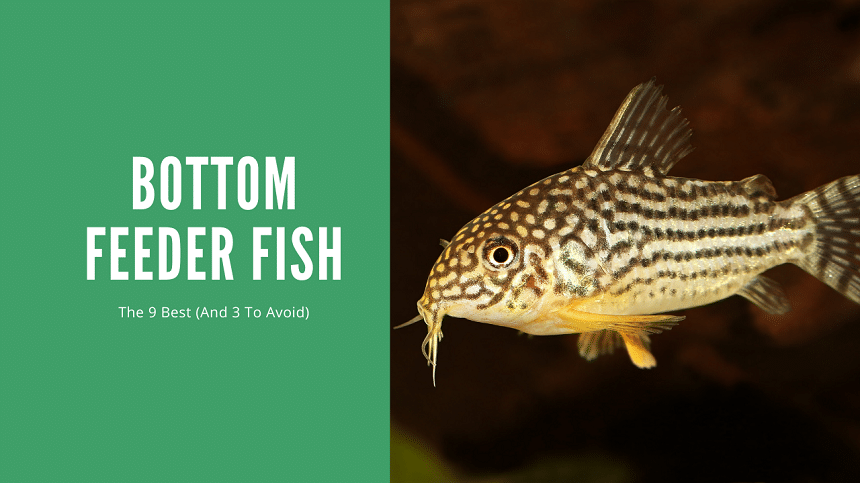
Redtail Catfish
Finally, let’s explore the intriguing world of Redtail Catfish, a larger bottom feeder fish that demands careful consideration. We will dive into their characteristics, tank size and setup, feeding habits, and water quality management.
Understanding Redtail Catfish
Redtail Catfish are an impressive species known for their large size and striking red tails. These fish can reach significant lengths, exceeding three feet in captivity. Due to their substantial growth potential, they require a large and adequately equipped tank. Redtail Catfish are best suited for experienced aquarists who can provide them with the care and habitat they require.
Tank Size and Setup
Providing the proper tank size for Redtail Catfish is crucial for their well-being. They require a tank capacity of at least 500 gallons to accommodate their growth and swimming needs. Additionally, the tank should have strong filtration, as these fish produce a significant amount of waste. Creating hiding places with large rocks or driftwood will help your Redtail Catfish feel secure in their environment.
Feeding Redtail Catfish
Redtail Catfish are carnivorous predators and have a voracious appetite. They require a diet consisting of meaty foods such as fish, shrimp, and pellets specifically formulated for large predatory fish. As they grow, their food requirements will increase, so it’s important to provide them with appropriate-sized meals and monitor their overall health and feeding behavior.
Water Quality Management
Maintaining optimal water quality is essential for Redtail Catfish, as they are more sensitive to poor water conditions compared to other bottom feeder fish. Regular monitoring of water parameters, conducting frequent water changes, and ensuring proper filtration are key to providing a clean and healthy aquatic environment for your Redtail Catfish.
Other Freshwater Bottom Feeder Options
In addition to the popular choices mentioned above, there are several other freshwater bottom feeders worth considering for your aquarium. Let’s take a quick look at some other options:
1. Kuhli Loaches
Kuhli Loaches are slender and eel-like bottom feeders known for their unique appearance. They are peaceful and enjoy burrowing in sandy substrates. Kuhli Loaches thrive in well-planted tanks with plenty of hiding spots and a varied diet of sinking pellets, live or frozen foods, and small invertebrates.
2. Chinese Algae Eaters
Chinese Algae Eaters are popular bottom feeders due to their excellent algae-eating abilities. However, it’s important to note that these fish can become aggressive as they mature, especially towards other bottom feeders and slow-swimming fish. Providing them with a spacious tank, ample hiding places, and a diet supplemented with algae wafers will help keep them healthy and content.
3. Clown Loaches
Clown Loaches are colorful and playful bottom feeders that bring a lively and entertaining element to any aquarium. They are social and prefer to live in groups. Clown Loaches require larger tanks and a diet consisting of high-quality pellets, flakes, and fresh vegetables. Adequate hiding places and a sandy substrate are also essential for their well-being.
4. Rainbow Sharks
Rainbow Sharks, despite their name, are not true sharks but rather bottom-dwelling fish with vibrant coloration. They are known for their territorial nature and may become aggressive towards other bottom feeders or fish of a similar appearance. Providing them with tank decorations and structured environments will help alleviate territorial disputes.
5. Siamese Algae Eaters
Siamese Algae Eaters are highly sought-after bottom feeders due to their excellent algae-consuming abilities. They have a sucker-like mouth and are known for their vibrant appearance. Siamese Algae Eaters prefer well-planted tanks with suitable hiding places and a diet supplemented with algae wafers, fresh vegetables, and occasional live or frozen foods.
In conclusion, adding a freshwater bottom feeder fish to your aquarium can enhance the overall health and beauty of your aquatic ecosystem. Whether you choose a smaller species like Corydoras Catfish or Bristlenose Plecos, or venture into the world of larger Redtail Catfish, each bottom feeder brings its own unique characteristics and requirements. By considering compatibility, tank size, feeding habits, and maintenance needs, you can choose the perfect bottom feeders to create a captivating and thriving aquarium.
